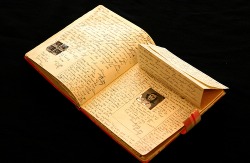Gathering Sources
Big6 terms: Info-Seeking Strategies; Location and Access
How do I perform successful searches?
When using print resources (books, newspapers, etc.), remember all the text features you learned when you were younger, and use those to help determine if that source has information relevant to your topic:
- Table of contents
- Index
- Copyright date
- Headings/sub-headings
- Graphs, charts, images
Use Boolean terms when searching online.
- AND - Adding "and" means that all results will include all search terms around and. Example: "peanut butter and jelly" will yield results where both "peanut butter" and "jelly" are included.
- OR - "Or" means either term around "or" may be present. Example: "peanut butter or jelly" will yield results where "peanut butter" OR "jelly" is present. This means you will have more results, but some may not be as relevant.
- NOT - "Not" narrows the field even more. Example: "peanut butter not jelly" will yield results where "peanut butter" is mentioned but NOT jelly.
- Click here for the Boolify Project and see for yourself the effects of using Boolean terms in your searches!
Wondering which search engine to use? NoodleTools provides a great tool to help you choose the best!
How do I know if a source is reliable?
Check out Hints about Print for some advice! Using reliable sources makes your research credible and worthwhile. Below is good information to determine reliability.
Source Reliability Checklist:

-Author background/credentials
-Publisher and sponsors
-Date
-Text features
-Purpose
-Publisher and sponsors
-Date
-Text features
-Purpose
Below is a checklist to use when evaluating Web sites.
| dupe_detector_web_site_reliability_check.doc |
Despite what Michael Scott says below, avoid using Wikipedia for research, since ANYONE can add information.
Can't I just Google it? Watch the presentation below, and see for yourself...
How are information sources different?
Try this activity to practice determining which types of sources are good for different purposes.
The “Big6™” is copyright © (1987) Michael B. Eisenberg and Robert E. Berkowitz. For more on Big6, visit: www.big6.com
The “Big6™” is copyright © (1987) Michael B. Eisenberg and Robert E. Berkowitz. For more on Big6, visit: www.big6.com
I found a source. Now what?
| works_cited.doc |
What is a primary source?

A primary source is an item (normally document) created during its time of study. For example, Diary of a Young Girl by Anne Frank is a primary source for studying World War II, since it was written during the actual time. Examples include:
- diaries
- interviews
- letters
- certificates
- speeches
- photos
What is a secondary source?
A secondary source is a source not created during its time of study. Instead, secondary sources describe or analyze primary sources. Examples include:
For a better understanding of secondary sources (and how they are different from primary sources), check out the presentation below.
- dictionaries
- textbooks
- encyclopedias
- articles
For a better understanding of secondary sources (and how they are different from primary sources), check out the presentation below.

